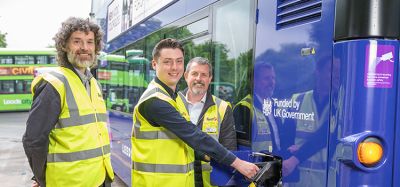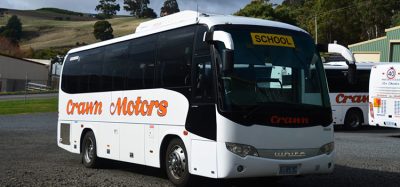Bird outlines contribution to mandatory scooter parking in Paris
- Like
- Digg
- Del
- Tumblr
- VKontakte
- Buffer
- Love This
- Odnoklassniki
- Meneame
- Blogger
- Amazon
- Yahoo Mail
- Gmail
- AOL
- Newsvine
- HackerNews
- Evernote
- MySpace
- Mail.ru
- Viadeo
- Line
- Comments
- Yummly
- SMS
- Viber
- Telegram
- Subscribe
- Skype
- Facebook Messenger
- Kakao
- LiveJournal
- Yammer
- Edgar
- Fintel
- Mix
- Instapaper
- Copy Link
Posted: 11 February 2020 | Sam Mehmet (Intelligent Transport)
Bird has outlined how it is contributing to the City of Paris’ shift to ‘mandatory parking’ which looks to reduce street clutter and improve parking options in the city.


Credit: Bird
To help the city of Paris meet its goals of reducing clutter and promoting proper scooter parking, Bird introduced a parking ‘preferred product’ in 2019 which used visual reference points in the app, real-time navigation, and GPS enabled alerts to prompt riders to end their ride within an approved parking space.
To encourage riders to park correctly, those who park in the designated zones were rewarded with a discount on their next ride. Going forward, the city is reportedly shifting to ‘mandatory parking’, and Bird will introduce graduated punishments for parking inconsistent with the city’s requirements.
“We’ve spent some time taking stock of our riders’ parking behaviour in the city and the ways in which we can improve compliance with city rules. Using two weeks of anonymised ridership data from August 2019, as well as information made available by the city via Paris Open Data and Open Street Map, we conducted a deep dive into rider parking activities, and how Bird’s new product impacted behaviour,” read a blog post by Bird.
Bird’s preferred parking spots consist of locations provided by the city of Paris, as well as other spots identified by Bird’s team which are said to adhere to the city’s parking rules.
“For each preferred parking spot, we can use a Voronoi partition to define a corresponding ‘catchment area’ – the region of the city for which that parking spot is the closest spot. This allows us to explore the density of parking spots across the city,” the blog continued, “we can then calculate the percent of rides in the catchment area that did or did not end at a Bird preferred parking spot.”
From Open Street Map, Bird is also able to add information on the number of nearby points of interest, such as cafes, restaurants, schools and libraries. It also collected information on each spot’s street, such as whether it is a one-way street or a main road, and how far the parking spot was from the nearest Velib and metro stations.
Bird announced that they discovered:
- Rides that start in a preferred parking spot are 7.9 per cent more likely to end in a preferred spot. It’s possible that seeing a scooter parked in a preferred location reminds a rider that they should also use preferred parking
- The use of preferred parking is lower for longer trips. It’s possible that riders are less likely to follow the rules when they are tired
- The use of preferred parking is lower where parking spots are sparse People park in preferred spots more often when spots are closer to each other, and when they have smaller catchment areas
- As parking spot capacity (the maximum number of vehicles per spot) increases, preferred parking use goes up. For every additional scooter that a spot can accommodate, that preferred parking rates in its catchment area increase by 0.3 per cent (estimate)
- The use of preferred parking is higher when the parking spots are near more bicycle and motorcycle parking spots. It is possible that having many two-wheel spots nearby acts as a visual reminder to use preferred parking
- The use of preferred parking is higher as the number of nearby schools increases. For each additional school within 200m of a parking spot, there is a 0.5 per cent increase (estimate) in the use of preferred parking.
Related topics
Fleet Management & Maintenance, Mobility Services, Security & Crime, Sustainable Urban Transport, Transport Governance & Policy, Vehicle & Passenger Safety
Related modes
Bikes & Scooters
Related cities
Paris
Related organisations
Bird







